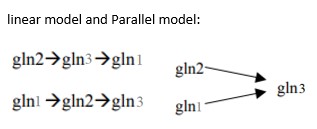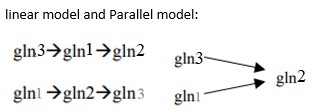#Question id: 5719
#Unit 8. Inheritance Biology
Homologous chromosomes pair in prophase I as a following way, if crossingover occur between P and Q gene of homologous chromosome?
Which of the following proceeding event due to this abnormality?
A. Dicentric chromosome become breaks at anaphase I
B. Resulting one of the gamete received chromosome with deleted segment
C. Recombinant gamete unable to produced viable progeny
D. Unable to separation of chromosome in anaphase II
#Question id: 5720
#Unit 8. Inheritance Biology
Which two of the following are the CORRECT statements ?
P. Nondisjunction in the parental meiosis is not essential to produce diploid organisms
Q. Nondisjunction in the parental meiosis is essential to produce aneuploid organisms
R. Nondisjunction in the parental meiosis is essential to produce hexaploid organism
S. Nondisjunction in the parental meiosis is essential to produce tetraploid organisms
#Question id: 5721
#Unit 8. Inheritance Biology
There is paracentric inversion heterozygote ABCDEFG/ABFEDCG involved in double recombination during meiosis I within inverted region result in
A. dicentric and an acentric chromosome in meiosis I as the chiasmata get terminated.
B. appearance of deletion in both the cross over product
C. all gamete are viable
D. nonviable gametes from crossover products.
Which of the above statements are correct?
#Question id: 5722
#Unit 8. Inheritance Biology
Meiotic products resulting from a single crossover within a pericentric inversion loop
A. This will generate a dicentric and an acentric chromosome following separation of chromosomes after crossing over
B. the inversion will completely suppress crossing over
C. All parental gametes that carry inversion chromosome are nonviable
D. All gametes from crossover products are non viable due to appearance of duplication of one arm and deletion of another arm
Which of the above statements are correct?
#Question id: 5723
#Unit 8. Inheritance Biology
An individual heterozygous for a reciprocal translocation possesses the following chromosomes
I- nonviability II – Viability
III- only translocated chromosome IV- only normal chromosome
V- one translocated another normal
Which of the following above chromosome constituent and feature in their gamete result from?
A- alternate B- adjacent-1 C- adjacent-2
#Question id: 5724
#Unit 8. Inheritance Biology
Species I is diploid (2n = 8) with chromosomes
AABBCCDD; related species II is diploid (2n = 8) with chromosomes MMNNOOPP. Individuals with the following sets of chromosomes represent what types of chromosome mutations?
A- AAABBCCDD B- AABBCCDDMNOP
C- AAABBCCDDD




